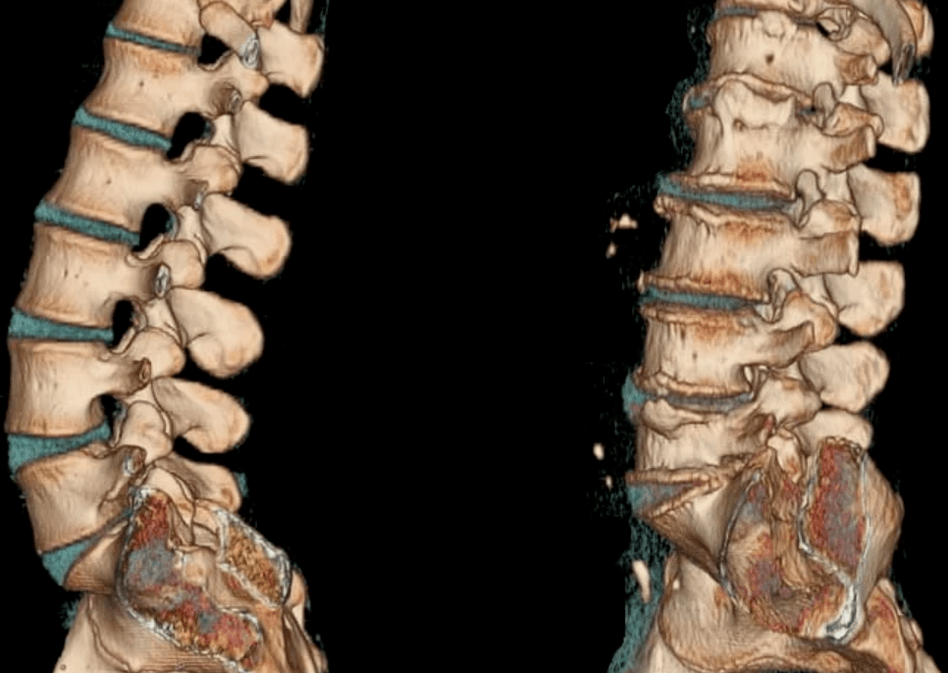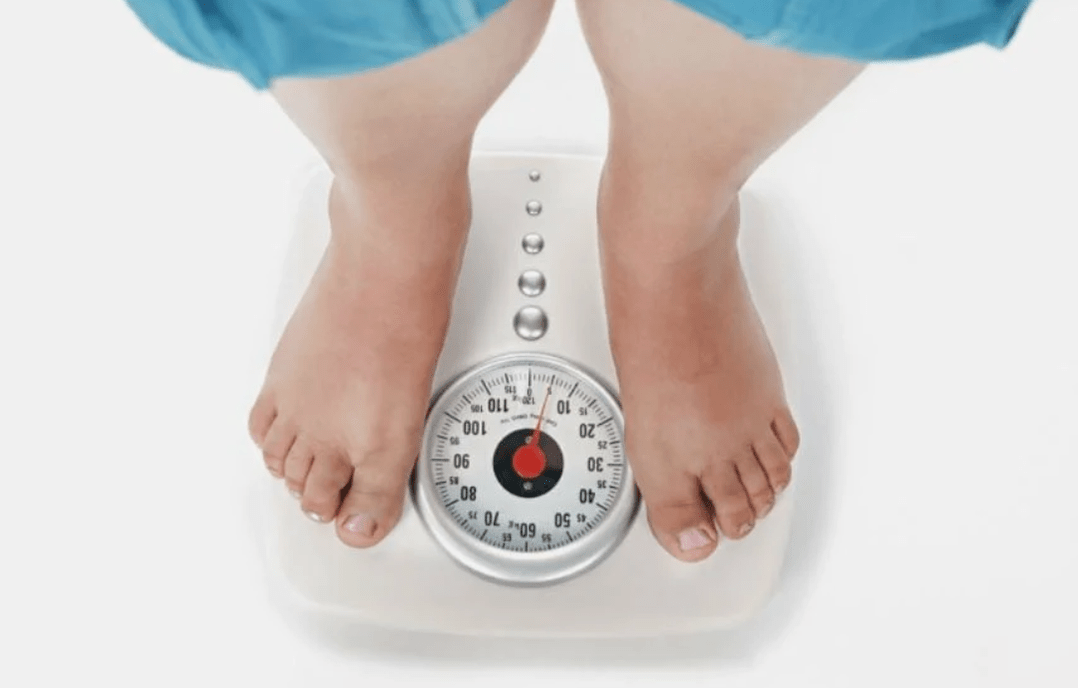Osteochondrosis is a chronic recurrent disease that occurs in the wake of constant destruction of vertebrates and intervertebral discs.Depending on the localization of the vertebrates with degenerative changes, they distinguish between the pathology of the breast, lumbosacral, as well as the neck.The leading symptoms of osteochondrosis are pain, the severity of which increases during physical effort, the severity of the movements.In the clinical picture, there are often signs of spine: headache, blood pressure jumping, visual severity and a decrease in hearing.

The diagnosis is based on the results of instrumental research - radiography, MRI, CT.Medications for various clinical and pharmacological groups are used during osteochondrosis therapy.To increase their clinical efficacy, physiotherapeutic and massage procedures are performed.One of the main methods of therapy and prevention is physiotherapy exercises.
The mechanism of development of the disease
The pathogenesis of osteochondrosis is based on the loss of pulposis with the nucleus of its hydrophilic properties.This semi -lift structure consists of connective tissue fibers and jacket.As a person grows, the vascular canal is reduced between the vertebrates in each disc.It is diffused in nutritions, ie, according to the spontaneous level of concentrations.This explains the inability of complete recovery of cartilage tissues after injury or after excessive physical effort on the spinal column.
Osteochondrosis processes exacerbate changes in hormonal background and an unbalanced diet.The amount of sufficient nutrients for their full functioning is not included in the cartilage tissue, which provokes the following disorders of their structure and properties:
- Strength and elasticity are lost;
- Form, consistency and configuration are changing.
The intervertebral wheels are flattened, and radial cracks are formed by fiber rings.This results in a decrease in the distance between neighboring vertebrates.Gradually, the connecting tissues of fiber rings and ligaments participate in the pathological process.In response to tissue spoilage, the immune system begins to produce immunoglobulins, causing aseptic inflammation and swelling in the joints and in the surrounding soft tissues.The capsules of the joints are stretched, so the intervertebral discs stop the spine reliably.And with the instability of the intervertebral segments, the likelihood of nerve root disorders or weakening of blood vessels increases.It is often found in cervical osteochondrosis and causes its pronounced symptoms.
Causes and provoking factors
In the state of intervertebral discs, the reduced tone of the skeletal muscles of the spinal column has a negative effect.The irrational, asymmetrical functioning of the muscles occurs with a prolonged person, in a non -ophysiological state, for example, when working on a computer, it has fallen.Destruction of cartilage fabrics can lead to a constant wearing of a heavy sack of one shoulder, dreaming of a soft lamb and a high pillow.
The following external and internal negative factors also accelerate the destruction of intervertebral discs:
- Endocrine and metabolic disorders;
- Infectious pathologies, especially chronic;
- Anterior spinal injuries (compression fractures, bruises);
- Frequent hypothermia;
- Systemic or degenerative-dystrophic diseases-Fsoria, rheumatoid arthritis, osteoarthritis, osteoporosis.

If a person has bad habits, then he or she is at risk.Alcohol smoking and abuse will deteriorate the state of blood vessels, causes insufficient blood circulation and deficiency of nutrients in the cartilage tissues.
In the presence of flat legs or clubs, the risk of developing osteochondrosis of any localization is significantly increased.Such congenital or purchased defects cause an increase in the load of the spine because it is impossible to support proper depreciation.The factor of the formation of pathology is obesity.
With the deposition of fatty tissues in different parts of the body, equilibrium support is complicated, causing excessive loads on the intervertebral joints.
Clinical picture
The first clinical manifestation of cervical, chest or lumbar osteochondrosis is pain.During recurrence, it is permeating, radiation on the nearby part of the body.The slightest movement causes the severity of pain syndrome.A person's answer is a compulsory position in which the intensity of unpleasant sensations is minimal:
- People with cervical osteochondrosis prefer not their head but the whole body;
- With breast pathology, a person is afraid of breathing as it causes severe pain in the chest;
- Patients with lumbar osteochondrosis find it difficult to sit, get up and go to spinal nerve disorders.
Most patients complain of a feeling of stupid permanent pain and a restriction of morning movement.This requires an additional differential diagnosis to exclude myositis (in the back muscles of the skeleton muscles) and osteoarthritis.The cause of pain, pain is the compensatory stress of muscle tissue to stabilize the affected vertebrate-drown segment.Severe or moderate severity of permanent pain syndrome also occurs due to a significant section of the intervertebral disc and the development of aseptic inflammation.
Specific symptoms are characterized by certain localization of osteochondrosis.For example, with lumbar pathology, lumbashaliga is often found - pain attack on the lower back and back of the thigh.Chest osteochondrosis is clinically manifested in the heart region with visceral pain, right hypoxondium, stomach, numbness, increased skin sensitivity, spine.But the most pronounced and varied symptoms are distinguished by a pathology that affects the intervertebral discs of the cervical.
As a result of the movement of the spine, the formation of osteophytes is compressed, the spine artery that nourishes the brain cells, which provides oxygen.A person suffers from coordination of movements, noise in the ears, headache, arterial hypertension.
What could be in the absence of treatment
Most osteochondrosis complications occur due to the formation of intervertebral disc hernia.It is created when the structure of the spine is displaced, causing the breakdown of the anterior longitudinal ligaments.The disc becomes even more unstable, and part of it enters the cerebrospinal canal.The hernia is considered an explosion if its targeted core, along with the disk, penetrates the channel.
Such an abnormal condition of vertebrates is prone to the development of spinal cord compression and discogenic myelopathy.Clinically, it is manifested in the torso, weakness of some muscle groups in the legs or arms, paresis, muscle atrophy, change of tendon reflexes.Disorders of the bladder and / or intestinal emptying may also be observed.As a result of the formation of intervertebral hernia, the arteries that feed on the spinal cord are contracted.Ischemic areas are created in which all nerve cells are killed.The so -called neurological deficit occurs - movements are violated, sensitivity decreases, and the trot is outraged.

Treating the tactic
Osteochondrosis does not allow the cure to complete, as drugs have not yet been synthesized, which will help to restore damaged intervertebral discs and spine.But therapeutic circuits inevitably include chondroprotectors - symptomatic agents of slow action.Preference is given to medications with active chondroitin ingredients with sulfate and (or) glucosamine sulfate (hydrochloride).
The clinical efficacy of these medicines is evidenced by the results of many years of study.With prolonged assumptions (3 months to 2 years), partial regeneration of cartilage tissues, as well as other connective tissue structures - ligaments, tendons, bushes.When they accumulate in the intervertebral discs of glucosamine and chondroitin, they begin to have a pronounced analgesic, deconging, anti -vast effect.This allows you to reduce doses of NSAIDs, glucocorticosteroids, muscle calming, thereby reducing the pharmacological load on the body.
The medicinal products of the joints are ineffective using irregular use or for the treatment of 3rd degree osteochondrosis when significant destruction of cartilage tissues is observed.
To eliminate the symptoms that are usually found in combination with cervical or breast osteochondrosis, medications are used to improve blood circulation, for notropes, a drug that improves maze microcirculation used for vestibular pathology.
If necessary, antidepressants, anticonvulants are included in therapeutic circuits.
Physiotherapeutic procedures are used in the treatment of osteochondrosis: UHF therapy, magnetotherapy, laser therapy.Reflexotherapy, massage, exercise therapy, hirudotherapy, swimming, yoga are used.With the ineffectiveness of conservative treatment, the patient is shown to have surgical intervention.Practice is practiced by replacing the disk, laser reconstruction or implant.


































